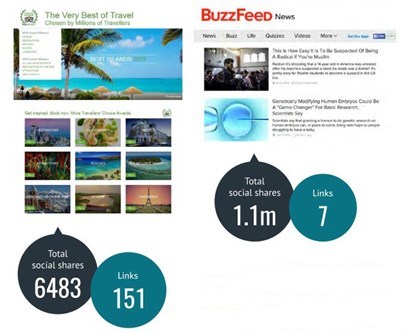In the world of content marketing, social and content should be the perfect bed fellows. But, how do you ensure they're both working for you? Start with a creative and comprehensive digital strategy and target your audience with the content they want to read.
By understanding your customer's behaviour and what makes them tick, you can influence them with the content you create. That's where consumer psychology comes into play. It's a book not unknown to many marketers, but if you haven't perused the pages of Influence: The Psychology of Persuasion by Robert Cialdini, then do so. Whilst it's no secret, applying this approach to your content marketing strategy can provide you with sophisticated, persuasive and compelling content.
There are several psychology principles to take into consideration to improve your content marketing and look at it from a different perspective. But, here's my top three picks:
Reciprocity: The best things in life are free
We've all heard of the saying 'scratch my back, and I'll scratch yours'. As a psychological principle and as a social construct, reciprocity refers to a response to a friendly action. Brands who adopt this principle are likely to receive a greater engagement rate with their customers. What does reciprocity look like in content marketing? Simply put, free content. It's something that Copyblogger has nailed.
The content you create should not only be insightful, engaging and interesting - but, fundamentally, it should be free. Blog posts, e-books, podcasts and data-driven content are the best ways of giving away value for free. And it's what will chime with your customers, resulting in them returning time and time again. Before turning your hand to this practice, decide on your approach. Be sure that it's content that people actually want and there's value in what you're getting in return. Done right, your content can breed loyalty and brand recognition.
Mind the information gap
Just over twenty years ago (back in 1994, to be precise), Dr George Lowenstein wrote a paper on Information Gap Theory. Briefly explained, it refers to the notion that when we come across something new, that isn't explained by our previous knowledge or experience, an information gap is formed.
In content marketing, knowing how to bridge that gap can bring you great rewards.
But where's the sweet spot we're suggesting you hit? The key here is to inspire curiosity with medium-sized information gaps. Don't alienate the reader by over complicating your content, nor create content that doesn't provoke enough questions. It's all about the striking the balance between interest and intrigue.
Think of your content marketing efforts as a script. All considered plots and scripts have a 'gap of knowledge'. It's the classic 'whodunnit' storyline or the EastEnders cliffhanger that provokes a reaction and response in the audience.
But, how do we apply the Information Gap Theory to content marketing? Headlines spark interest. They're critical to the success of your copy, and are the easiest way to attract the attention of a potential audience. Look at what advertising mogul David Ogilvy once said: "On average, five times as many people read the headlines as read the body copy". If that's the case, it's time to perfect your sell and bridge the gap.
Social Proof: Follow my leader
Take heed of the much-loved children's game and mirror that in the world of content marketing. By harnessing a concept called social proof, you can create a positive influence with your content. Social proof refers to the psychological principle that makes you adopt or mimic the actions of an influential group of people. This can be people you like or trust, and is driven by the belief that we are wired to learn from others. This 'me too' affect is best explained by the likes of celebrity endorsements, an expert opinion or paid endorsements. It can even refer to user social proof, with social media mentions, reviews and case studies. Both Trip Advisor and Buzzsumo use this concept to great effect.
By implementing social share buttons, users can see how many shares a piece of content has generated and, as such, are more likely to share it themselves. Also, highlighting user experiences with reviews and ratings can signal to others that your service or product is trustworthy.
Final thoughts
A solid content strategy is essential to all content marketing campaigns. Without content, brands cannot achieve the buzz and interest they need. But, don't forget, when creating content strategies with objectives at the heart, it's all too easy to forget the human element. Neglecting this can make your content seem contrived. Remember to strategise with your audience in mind and not just the metrics.

